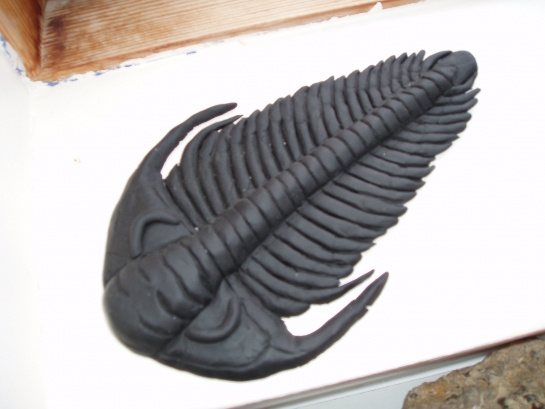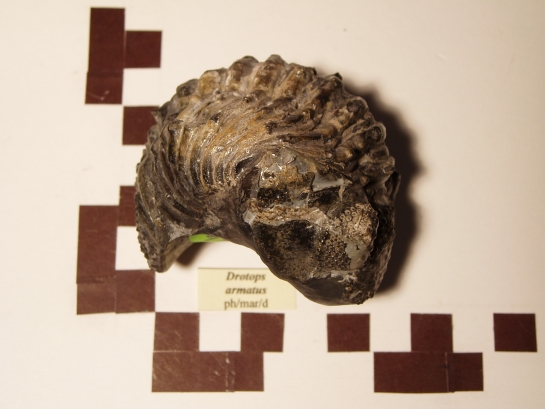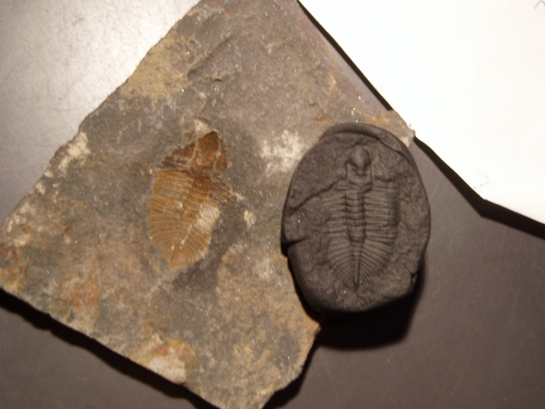Je hebt natuurlijk ook nog altijd \"walking with monsters\", dat volgens mij in de lage landen nog niet op de markt is gebracht. \"Walking with monsters: Life before the dinosaurs\" gaat idd over het paleozoicum... voor 10£ te koop op de BBC website:
http://www.bbcshop.com/invt/bbcdvd1750& ... nature,119
Even googlen naar de inhoud:
The first episode begins with an illustration of the giant impact hypothesis: approximately 4.4 billion years ago when the Earth was formed, it is conjectured that a planet-like object referred to as Theia collided into the early Earth, dynamically reshaping the Earth and forming the moon. The episode then jumps ahead to the Cambrian Explosion, showing the first diversification of life in the sea and the emergence of a primitive fish known as Haikouichthys. Next, it shows the giant arthropods of the warm shallow continental seas of the Silurian, the emergence of the armoured \"jawless\" fish, and the colonization of the land by one of the first land plants. Finally, in the Devonian, it illustrates how lobe-finned fish eventually evolved into amphibians that could come on to land. It also discusses the evolutionary break-through of the amniote egg that allowed reptiles to permanently leave the water.
The second episode shows the swamp-like seas of the Carboniferous. It explains that because of a much higher oxygen content in the atmosphere, giant land arthropods evolved, including giant spiders (\"the size of a human head\"), millipedes (\"the size of a car\"), and dragonflies (\"the size of an eagle\"). It also depicts large predatory amphibians. The first half of the second episode follows the storyline of the giant spider Mesothelae as it tries to escape an intense lightning storm and rising waters. It shows the spider hunting down the small reptile Petrolacosaurus.
The episode then moves on to the early Permian, where the swamp-loving trees of Carboniferous have been replaced with more advanced conifers that are better adapted to survive in a changing climate. It depicts some of the earliest synapsids, or \"mammal-like reptiles\", known as pelycosaurs. It explains that the sailbacks of the pelycosaurs evolved as thermoregulatory devices. The second half of the second episode follows the storyline of a mother Dimetrodon, as it hunts down the herbivorous Edaphosaurus, and guards its nest from other Dimetrodons and from a scavenging Seymouria.
The third episode is set in the Late Permian, on the supercontinent Pangaea, which was covered by a vast and inhospitable desert. In this arid climate, early therapsids, which are described as more more \"mammal-like\" than reptile, are shown fighting to survive, including the fierce predator Gorgonops and the mole-like Diictodon. The episode discusses the simplified jaw of the Diictodon, that allowed some of its jaw bones to be used for primitive hearing (and that ultimately led to the evolution of the mammalian ear). It also shows the Scutosaurus, a distant relative of the turtle, whose body lacked a shell but which was heavily armoured with bony scutes on its skin and knobs and ridges on its skull.
The episode ends with a discussion of the Permian-Triassic extinction, the greatest extinction of life on earth, and how it led to the rise of the dinosaurs. Shortly after the mass extinction, herds of therapsids known as lystrosaurs soon dominated the terrain. The coinhabiting ancestor of the dinosaurs is shown to be the small archosaur Euparkeria, which was very swift but still in the process of evolving to be able to run on its hind legs. Of course, by the end of the Triassic, dinosaurs would radiate from these small archosaurs to dominate the land.
Lekker!!!

Ziepe



